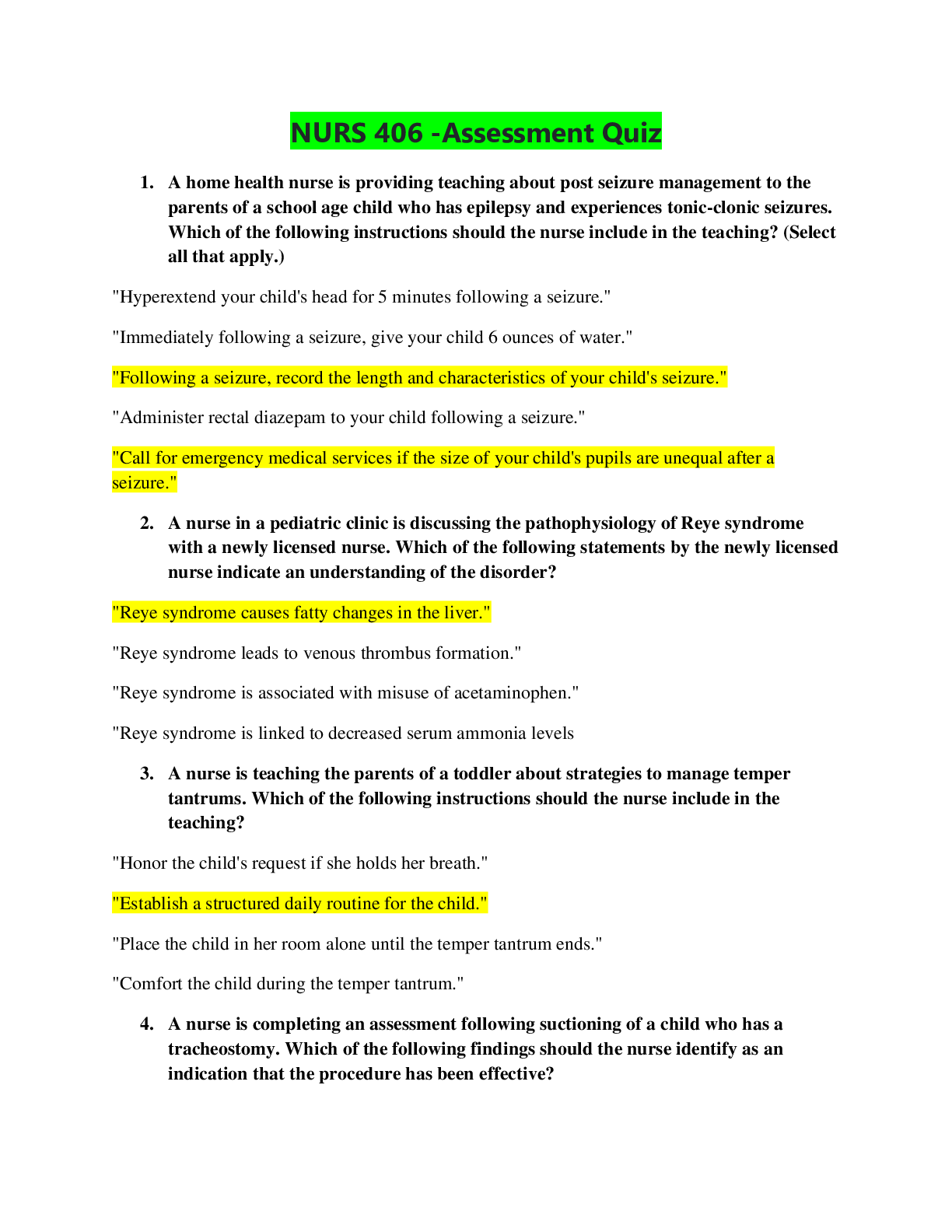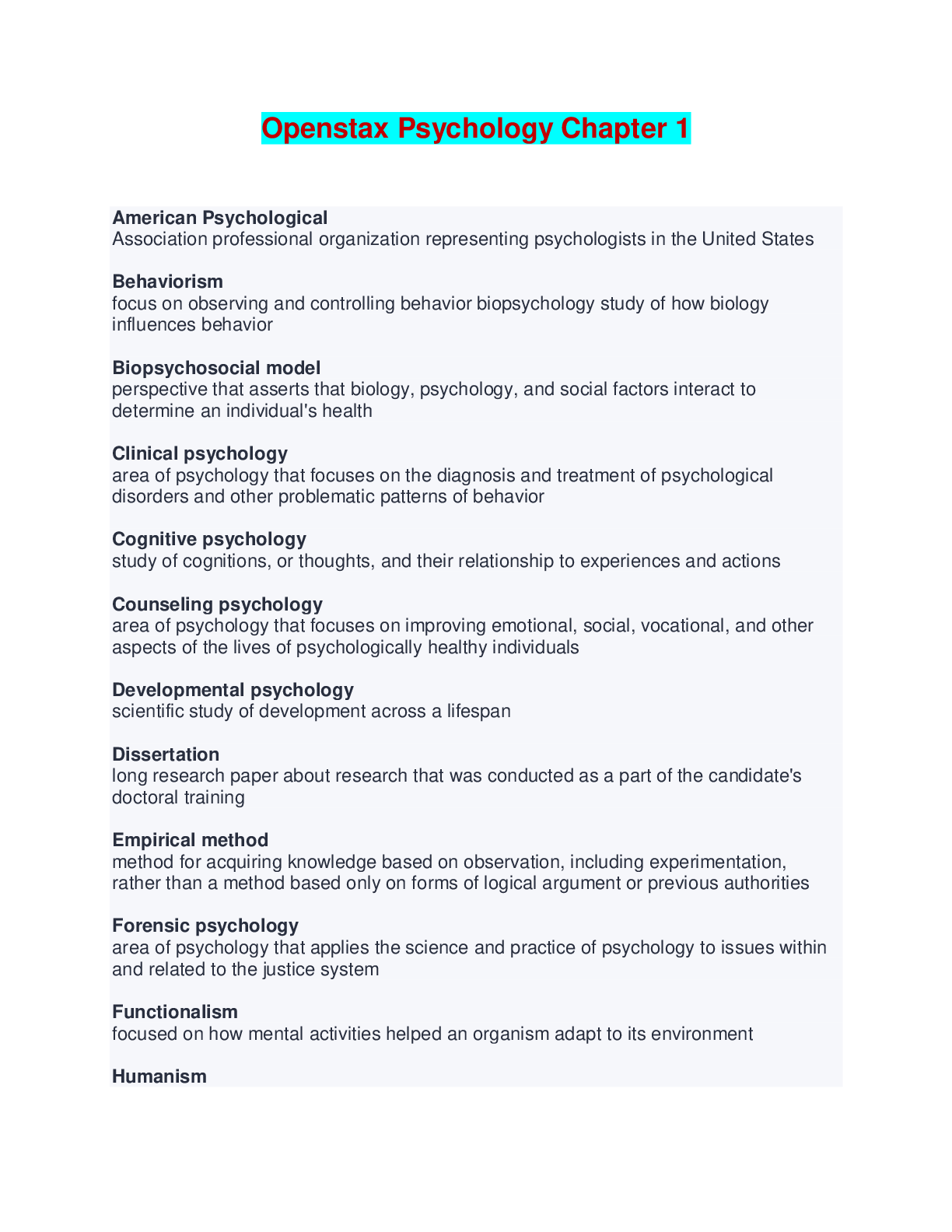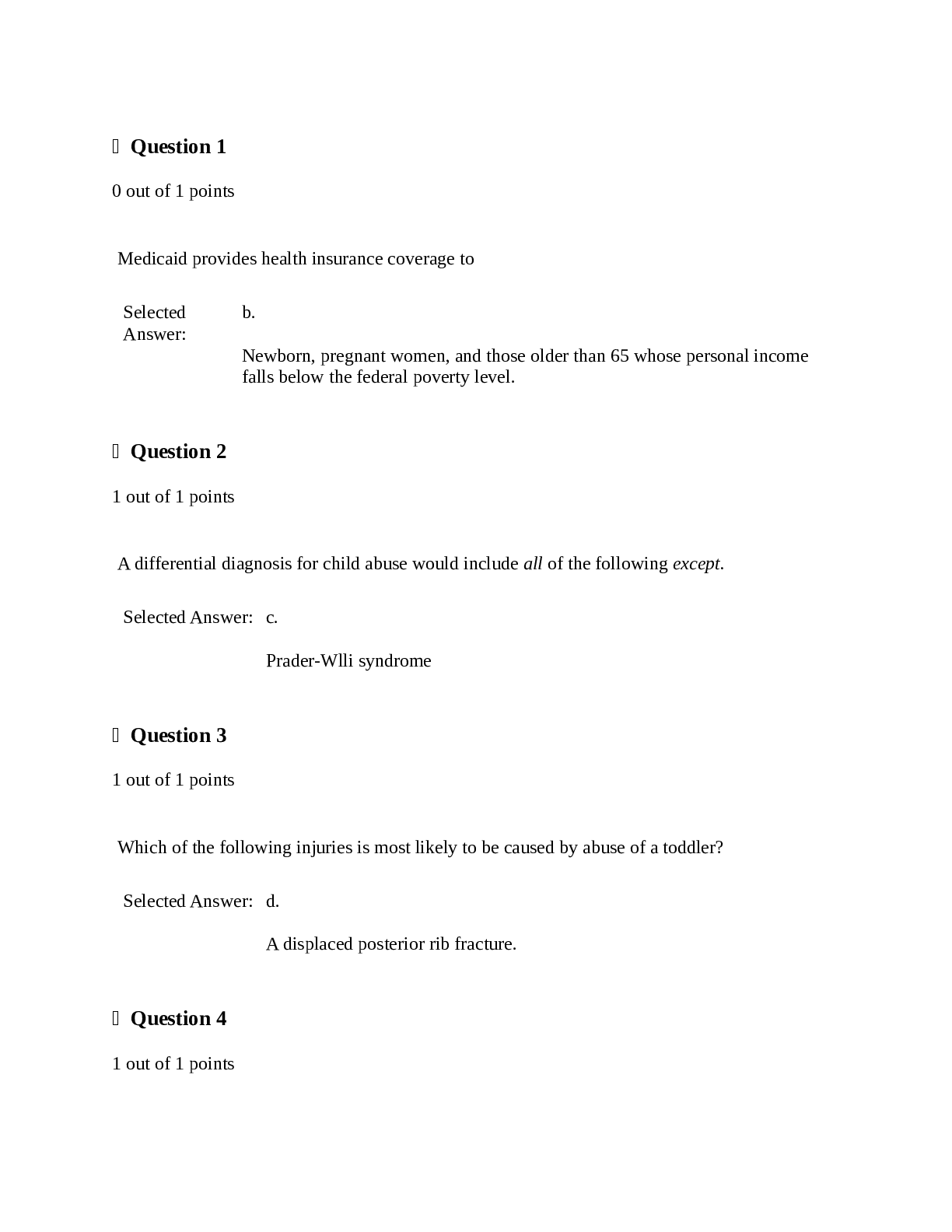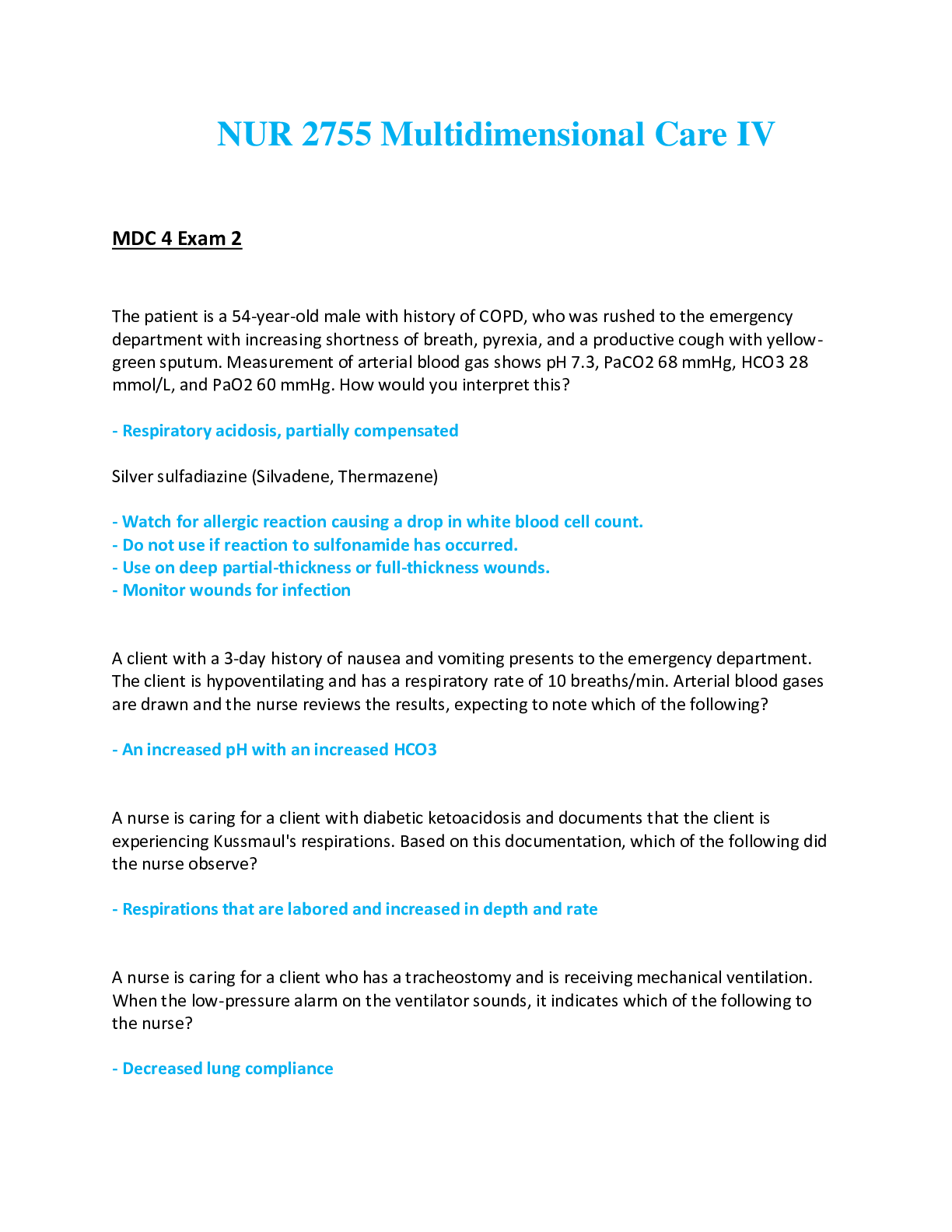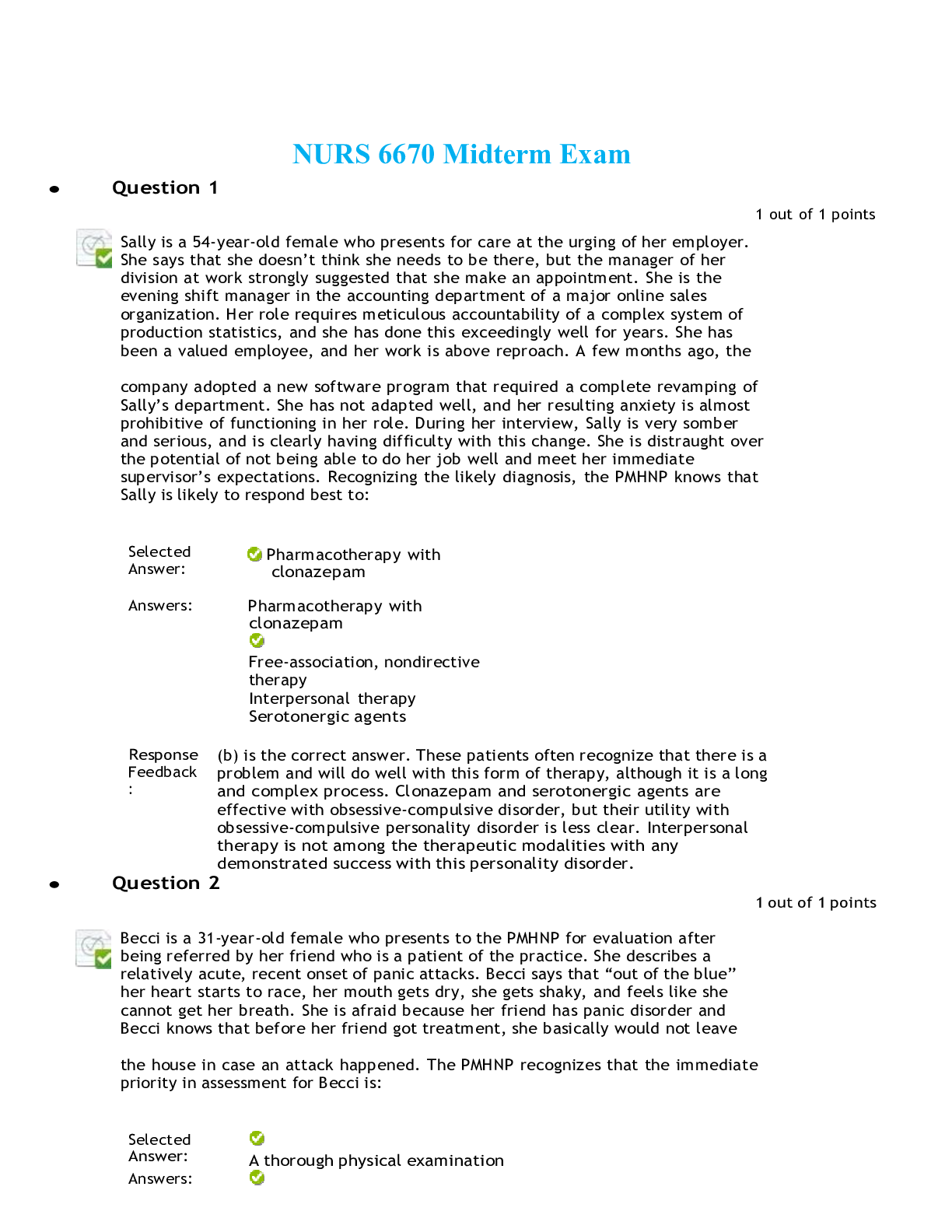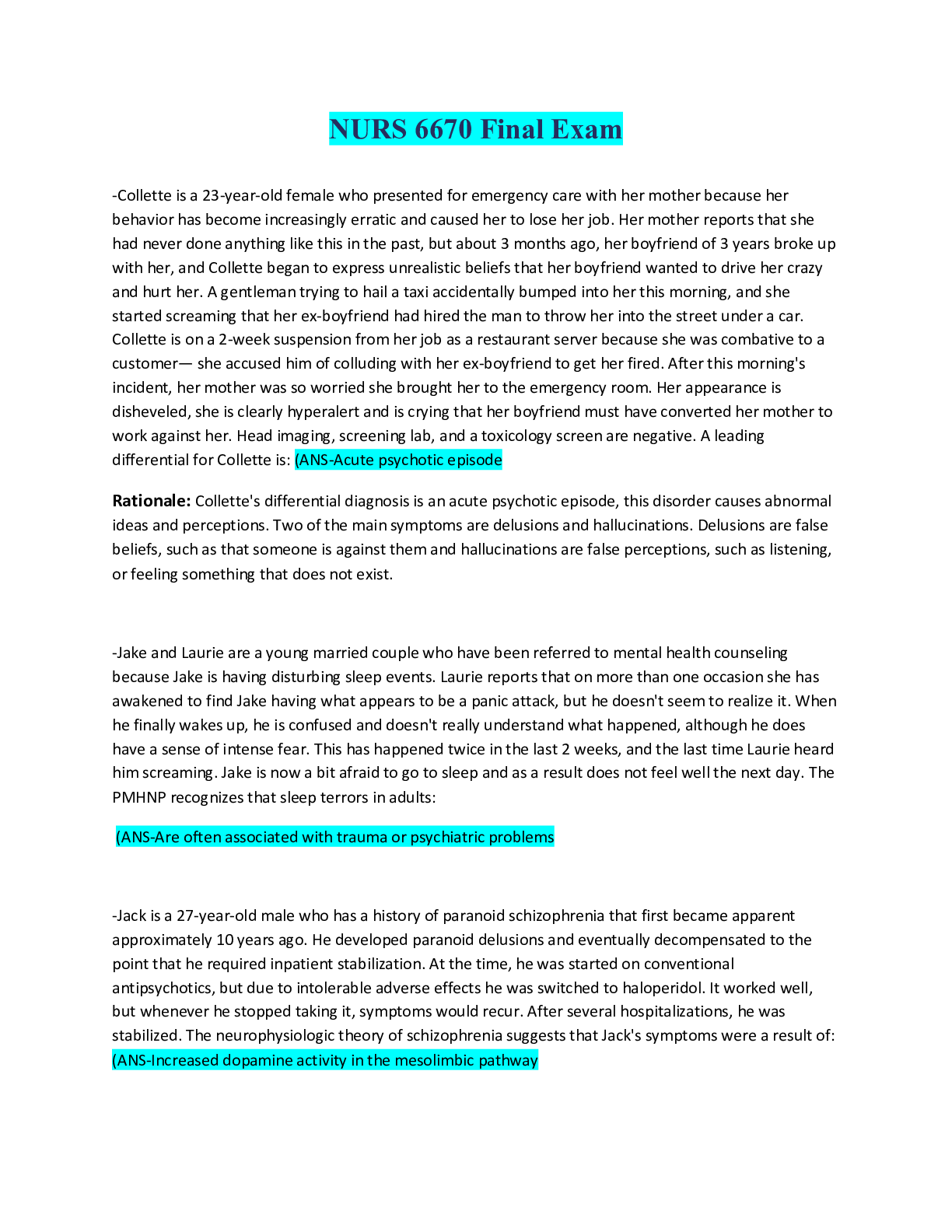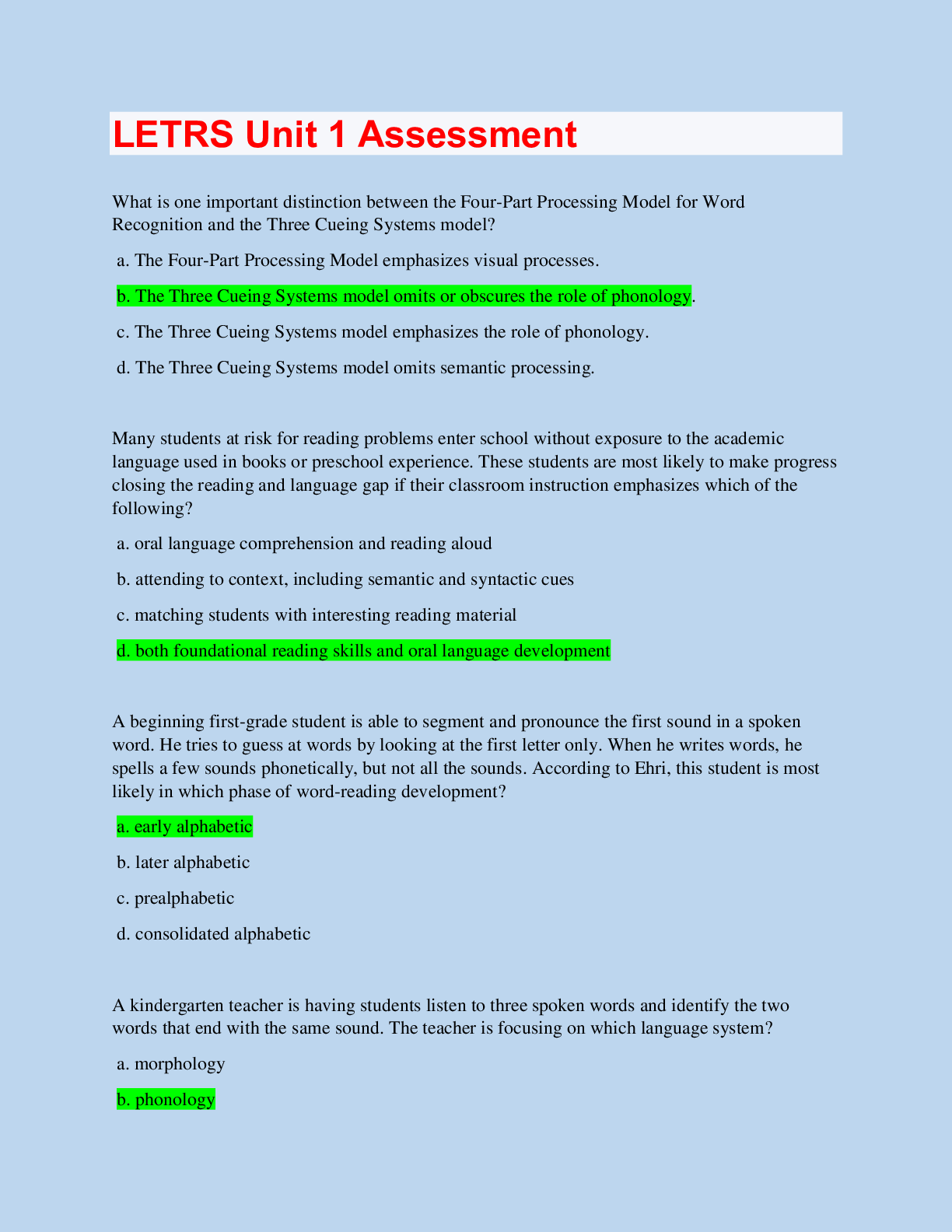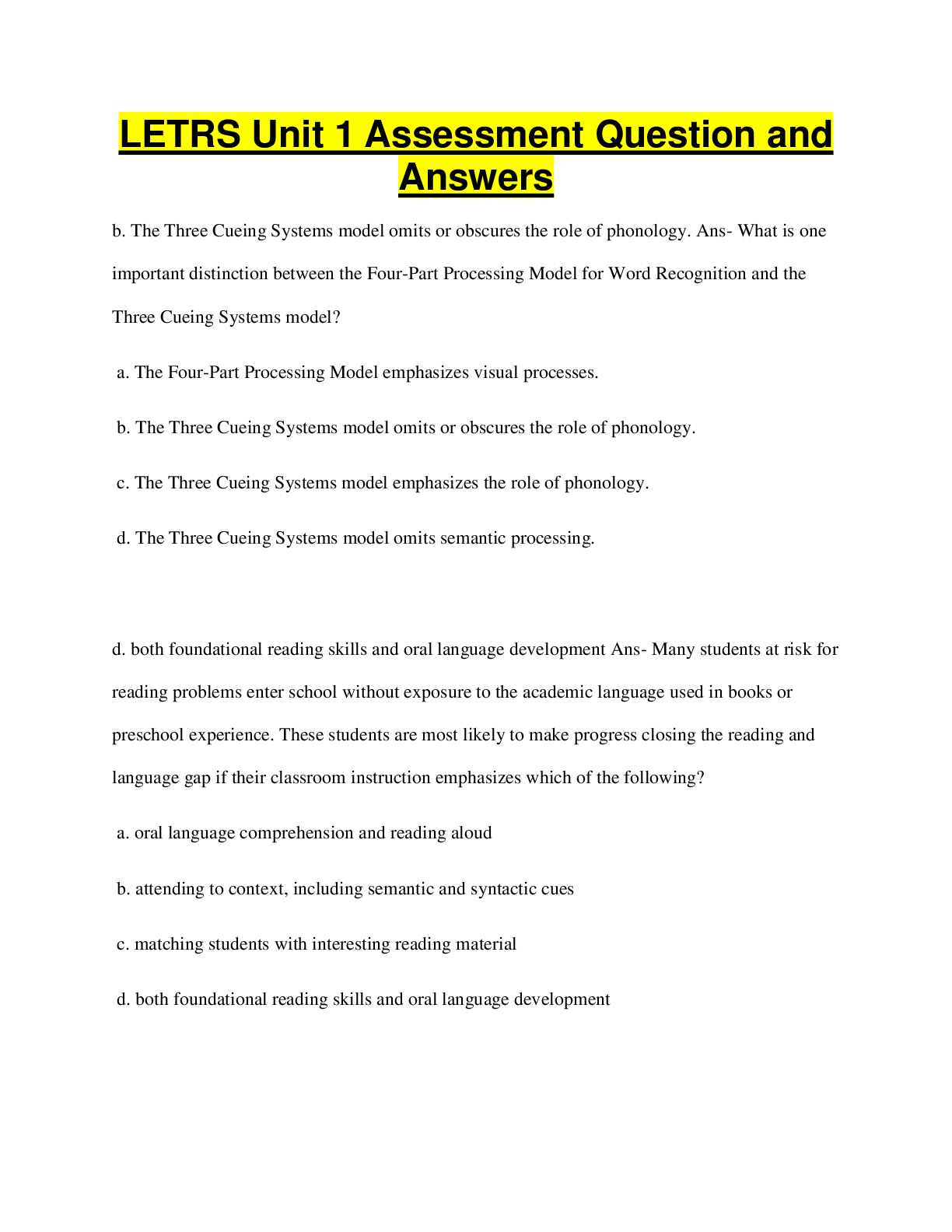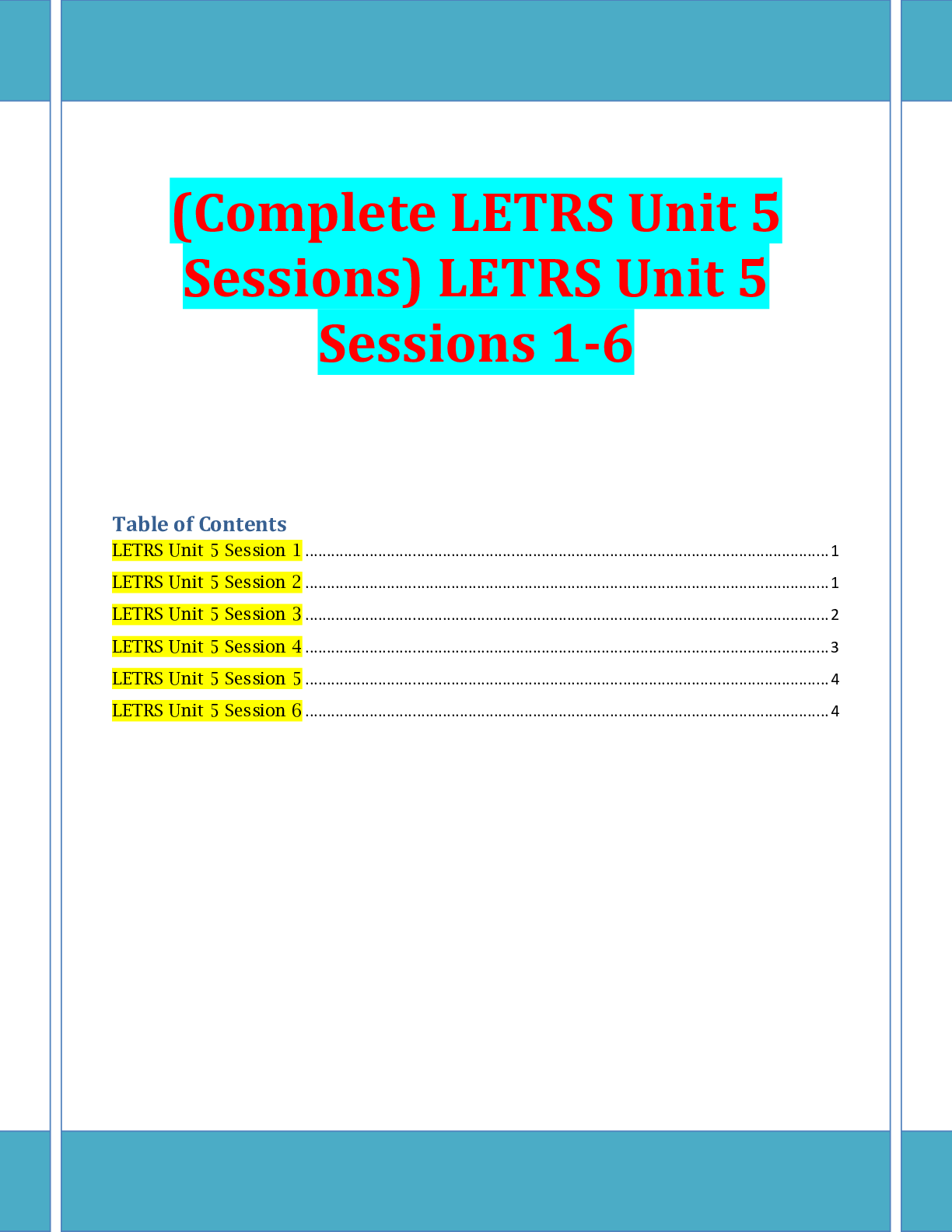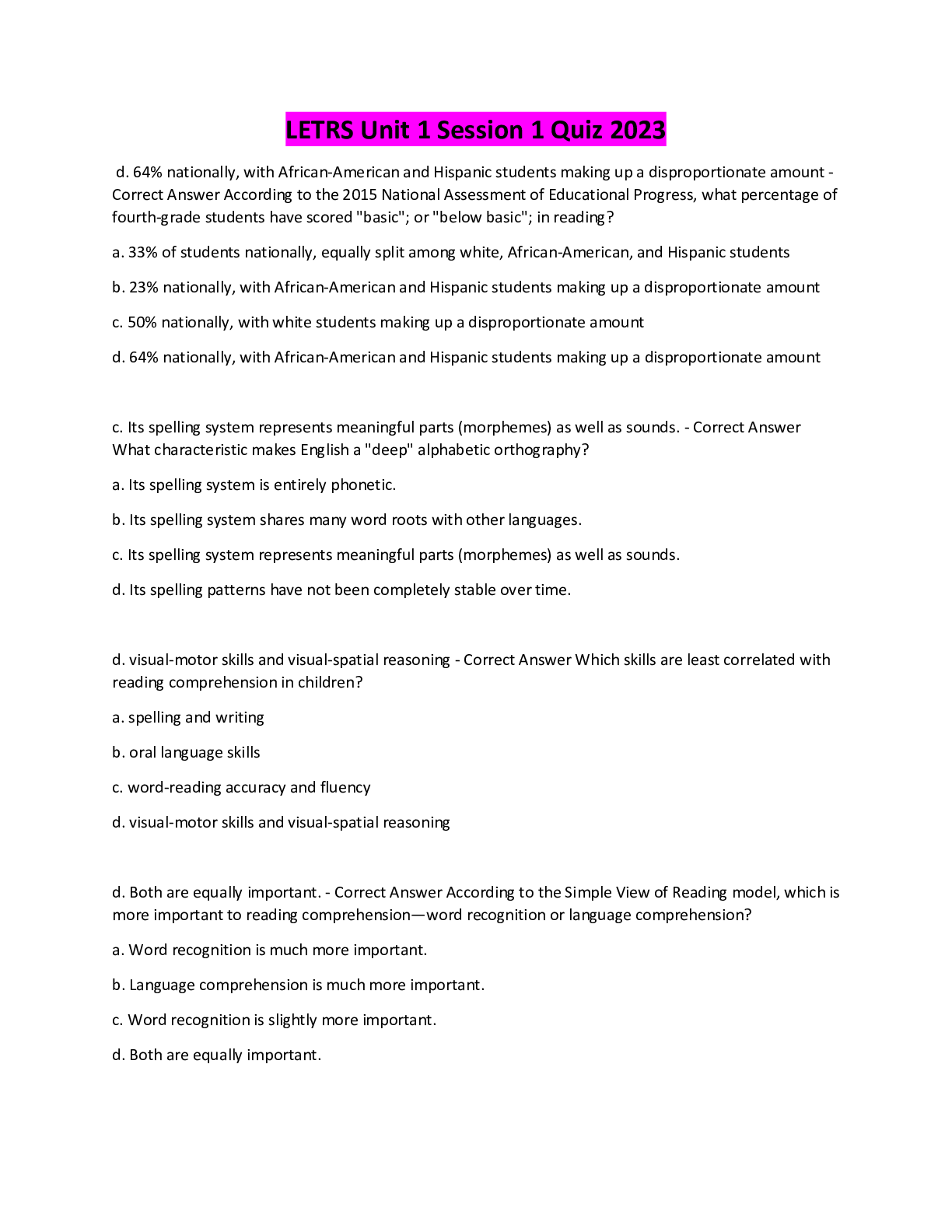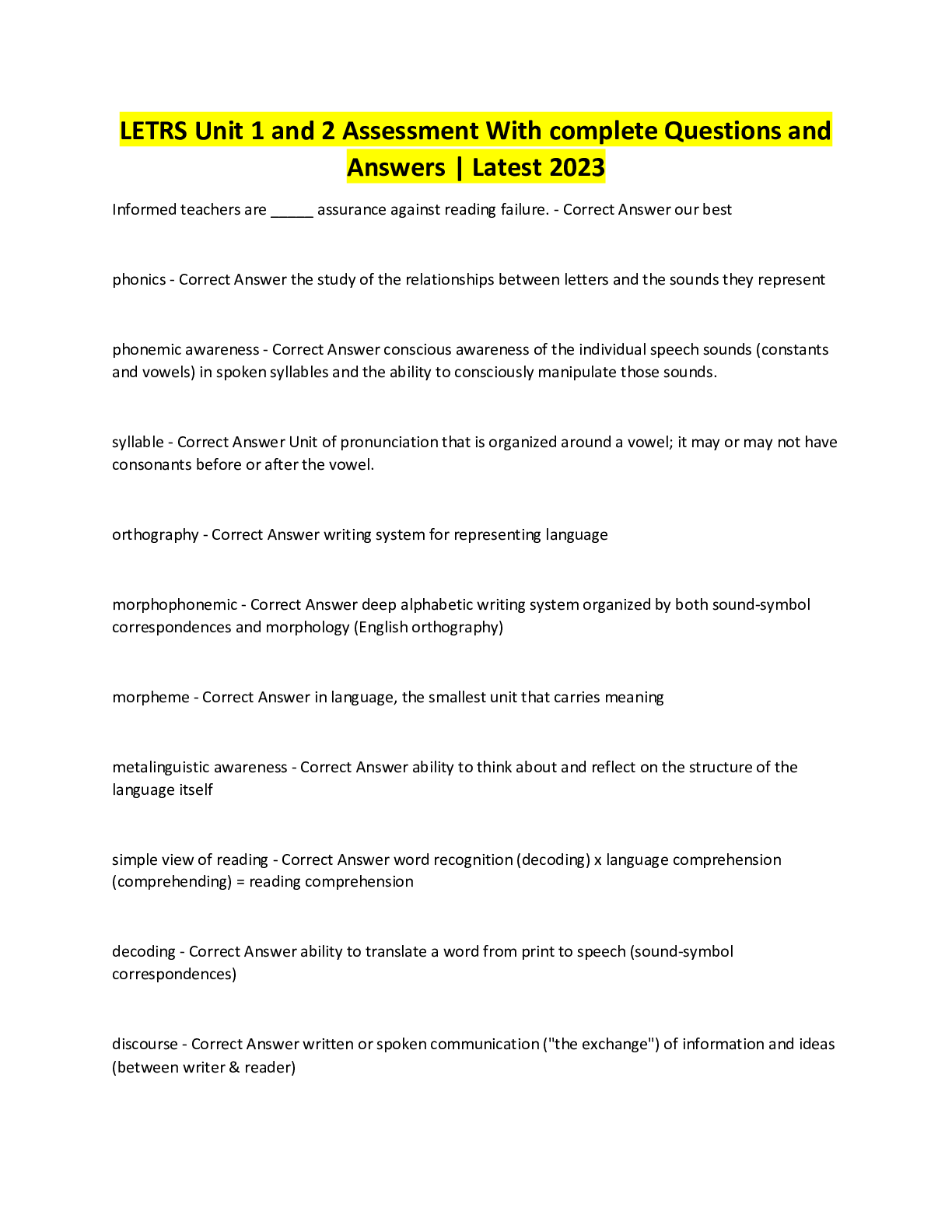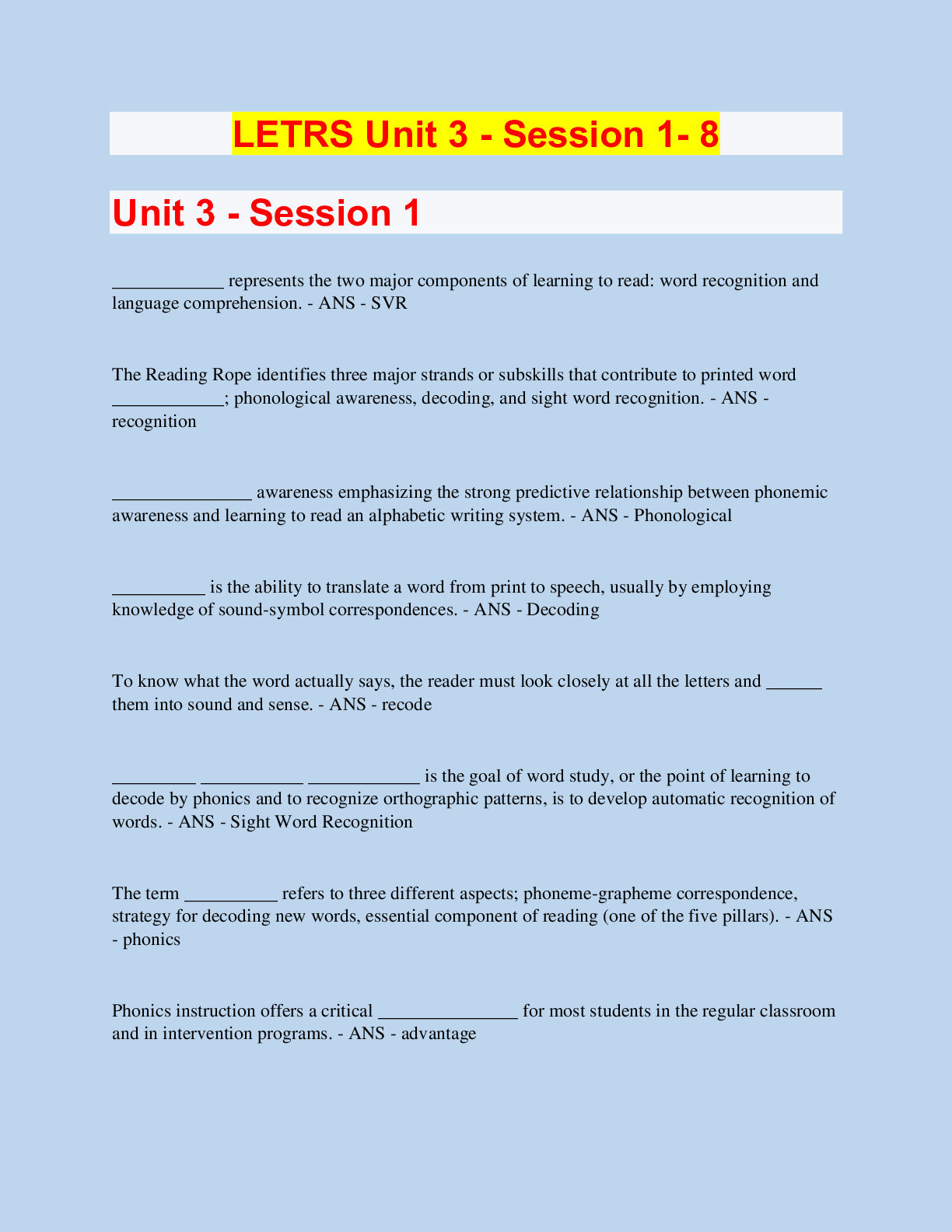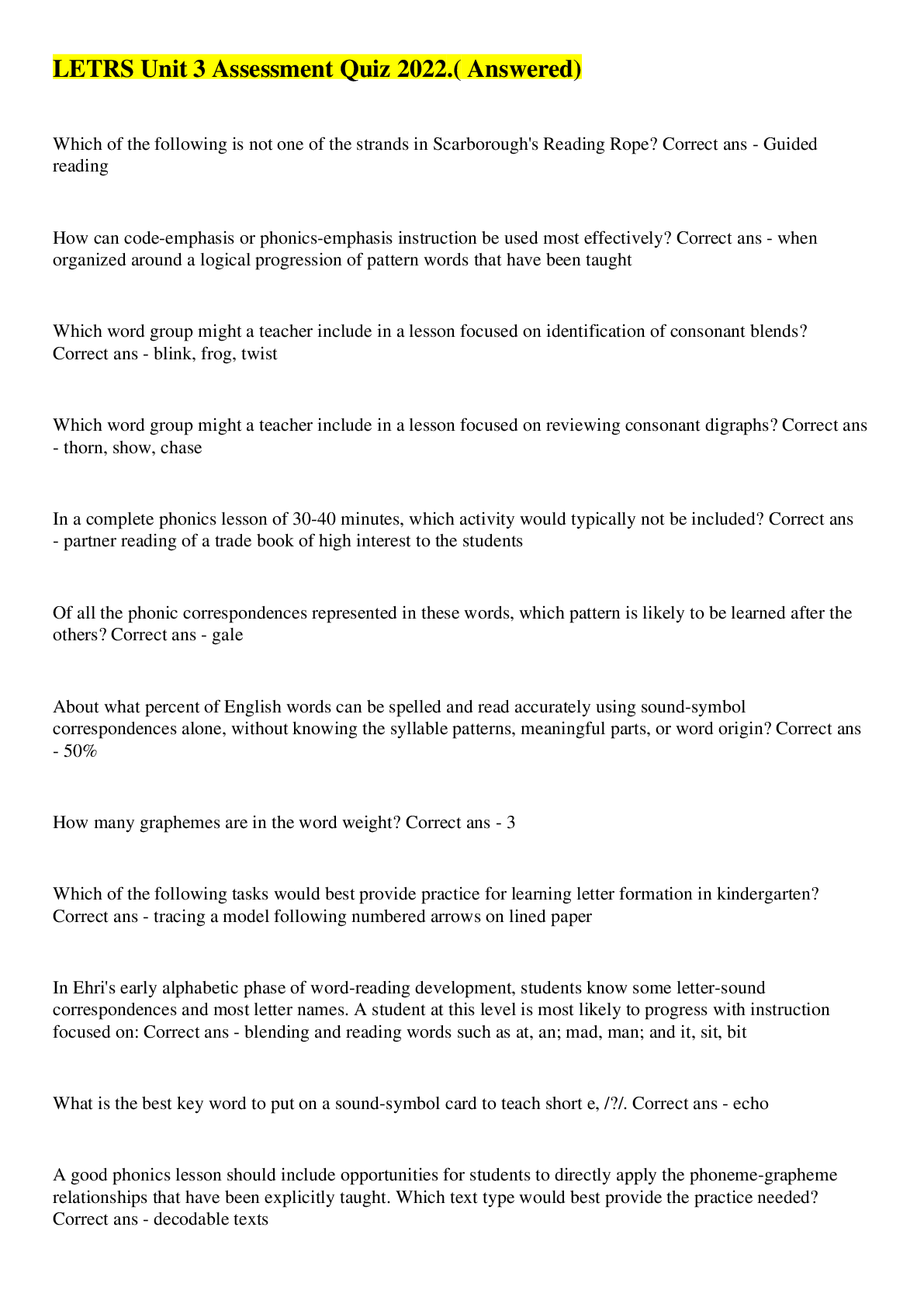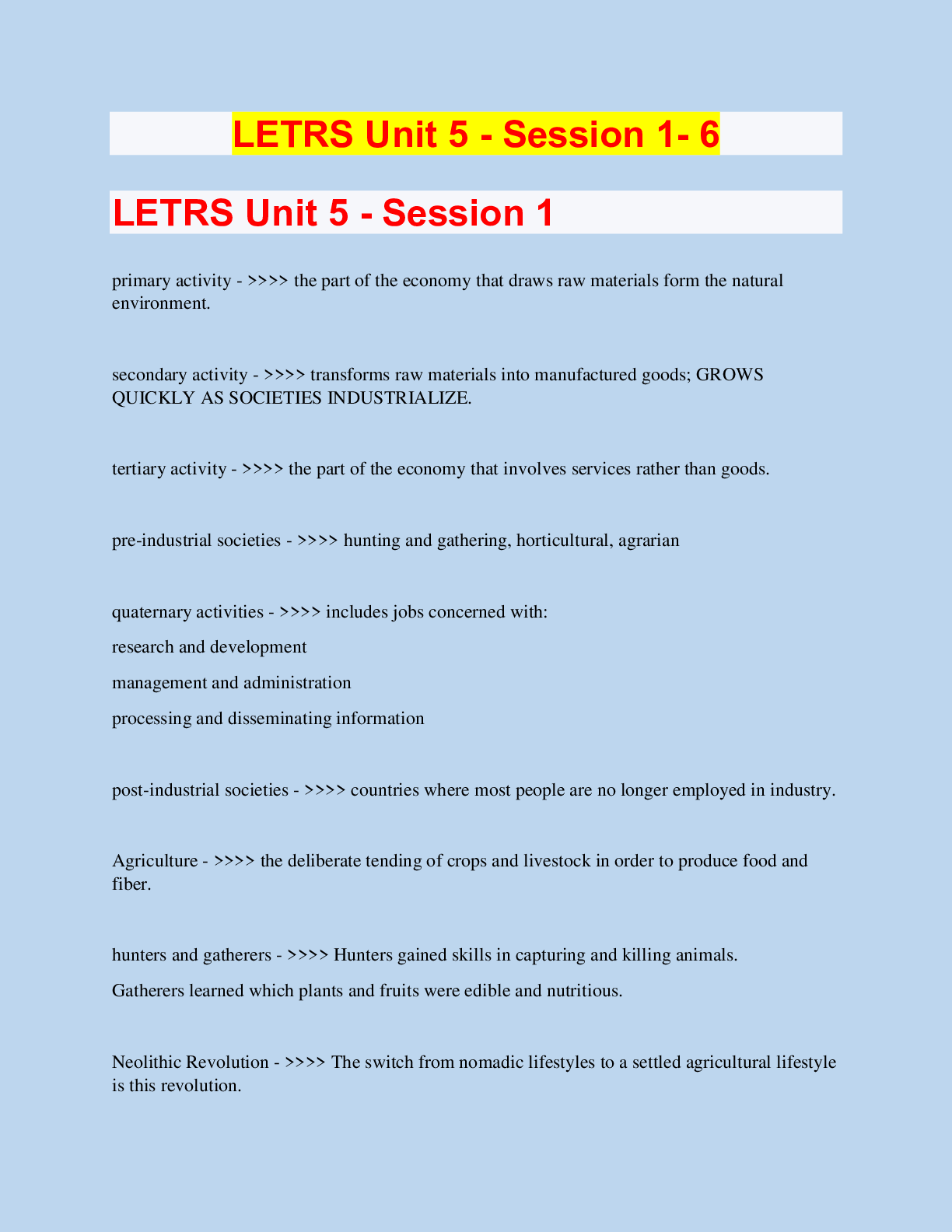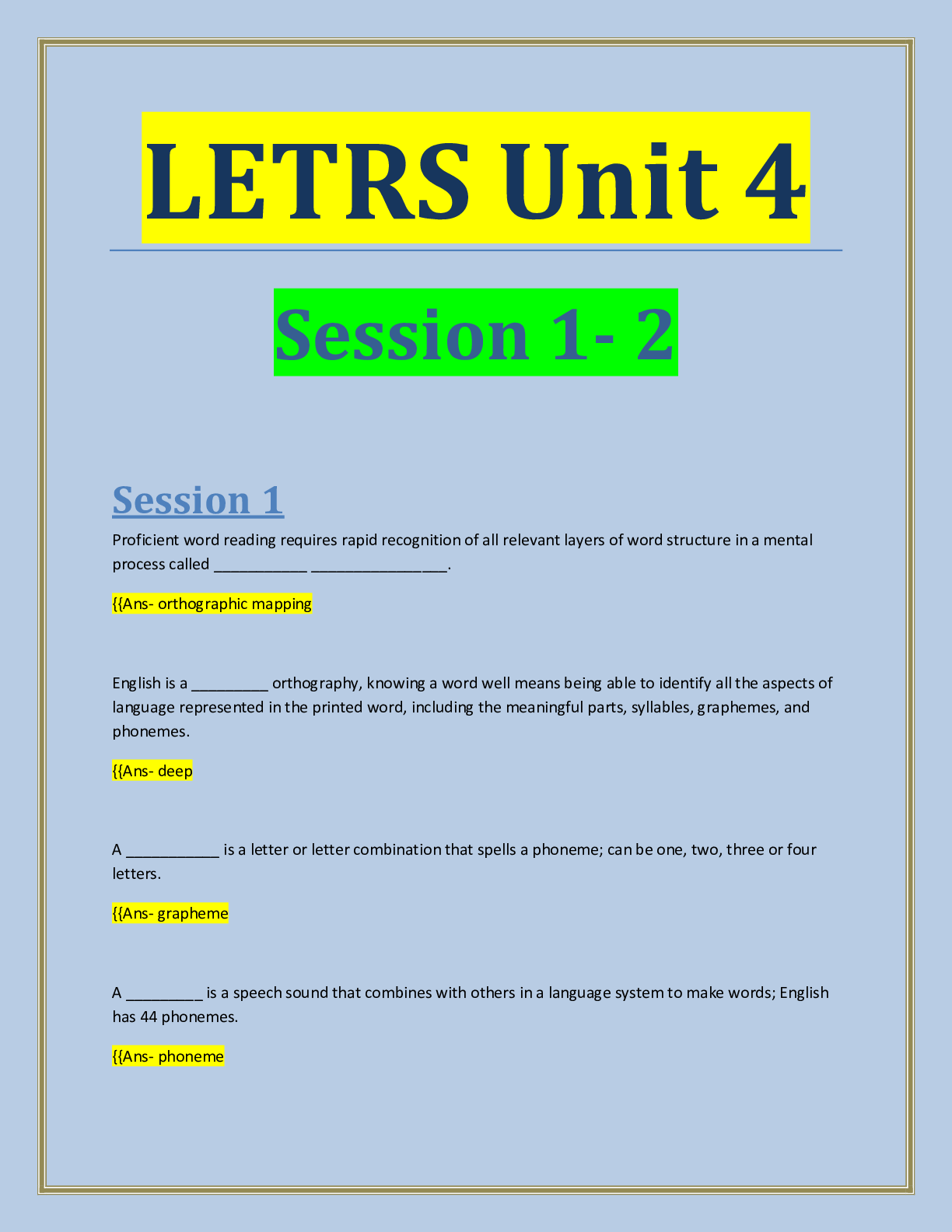NURS 620 Exam II (Cardiovascular and Respiratory)
Document Content and Description Below
NURS 620 Exam II (Cardiovascular and Respiratory) What is a causative factor in the formation of blood clots causing deep venous thrombosis? A. Blood flow turbulence B. Intact vessles. C. Thin blood. ... D. Hypercoagulability. Before counseling partners about sexual activity following a myocardial infarction, the provider should consider what factors? A. Most clients do not want to know how their condition affects their sex life. B. Spouses are knowledgeable about their partners condition; therefore they do not need counseling. C. Most clients return to the same frequency of sexual intercourse after they have regained their physical strength. D. Depression, loss of interest, spousal reluctance, and anxiety may interfere with a client's resumption of sexual activities. What is a common fundoscopic change associated with hypertension? A. Optic disk swelling. B. Gray lesions. C. Deep intraretinal hemorrhages D. A Cup-disk ratio greater than 1 to 2. You are starting Jill, age 61, on a statin as she had a stroke recently as well as having PVD. Which is your drug of choice? A. Atorvastatin B. Pravastatin C. Lovastatin D. Simvastatin. Which of the following statements is true of mitral regurgitation? A. It may be noted as holosystolic murmur. B. It is caused by stiff, non-compliant leaflets that limit flow from the left atrium to the left ventricle. C. It occurs only as the result of congenital malformation of the mitral valve, which inhibits contact and closure of the cusps D. It results in a prolonged PR interval on ECG. Shirley, age 58, has been a diabetic for 7 years. Her blood pressure is normal. Other than her diabetes medications, what would you prescribe today during her routine office visit? A. ACE inhibitor B. Calcium Channel Blocker C. Beta blocker D. No hypertension medication. Sam, age 70, originally had symptoms of syncope and then symptomatic ventricular tachycardia with aborted sudden death. He is now treated pharmacologically. He asks you when he can resume driving. How do you respond? A. You may drive again in 1 month. B. You should not drive again for 6 months. C. As this may recur, let's wait until you're free of any symptoms for 1 year. D. You probably shouldn't drive any more. Pathological U waves on the ECG are most commonly associated with which disorders? A. Hypercalcemia. B. Hypocalcemia C. Hyperkalemia D. Hypokalemia. Community acquired bacterial pneumonia is most commonly caused by: A. Streprococcus pneumoniae B. Mycoplasma pneumoniae C. Haemophilus influenzae D. Staphylococcus aureus. The most common cause of a persistent cough in children of all ages is: A. An allergy B. Recurrent viral bronchitis. C. Asthma D. An upper respiratory infection. What is the normal respiratory rate of an 18 month old child while awake? A. 58-75 breaths per minute B. 30-40 breaths per minute C. 23-42 breaths per minute D. 19-36 breaths per minute. When you teach clients about using steroid inhalers for asthma or COPD, what information is essential? A. Keep the inhaler in the regrigerator B. Do not use another inhaler for 10 minutes after the steroid inhaler. C. Rinse your mouth after using the inhaler. D. Be careful not to shake the container before using. Approximately 50% of children with viral croup have a(n) A. Aspirated foreign body. B. tapered symmetric subglottic narrowing on x-ray C. Concurrent epiglottitis. D. History of allergic rhinitis. What is the name of the horizontal groove in the rib cage at the level of the diaphragm that extends from the sternum to the midaxillary line and that occurs normally in some children as well as in children with rickets? A. The sternal groove B. The rickettsial groove C. The maunbrial groove D. Harrison's groove. Martin, age 76, has just been given a diagnosis of pneumonia. Which of the following is an indication that he should be hospitalized? A. Inability to take oral medications and multilobar involvement on chest x-ray. B. Alert and oriented status, slightly high but stable vital signs, and no one to take care of him at home. C. Sputum with gram-positive organisms. D. A complete blood count (CBC) showing leukocytosis. The well established risk factors for a nosocomial pneumonia caused by a multidrug-resistant organism are/is? A. Antibiotic exposure and a hospital stay of more than 1 week. B. age greater than 65 and having COPD C. having outpatient surgery D. having allergies to multiple antibiotics. You have been counseling your client about her asthma. you realize she does not understand your suggestions when she tells you that she will do which of the following? A. cover the mattress and pillows in airtight, dustproof covers. B. Wash the bedding weekly and dry it on a hot setting for 20 minutes. [Show More]
Last updated: 4 months ago
Preview 1 out of 56 pages
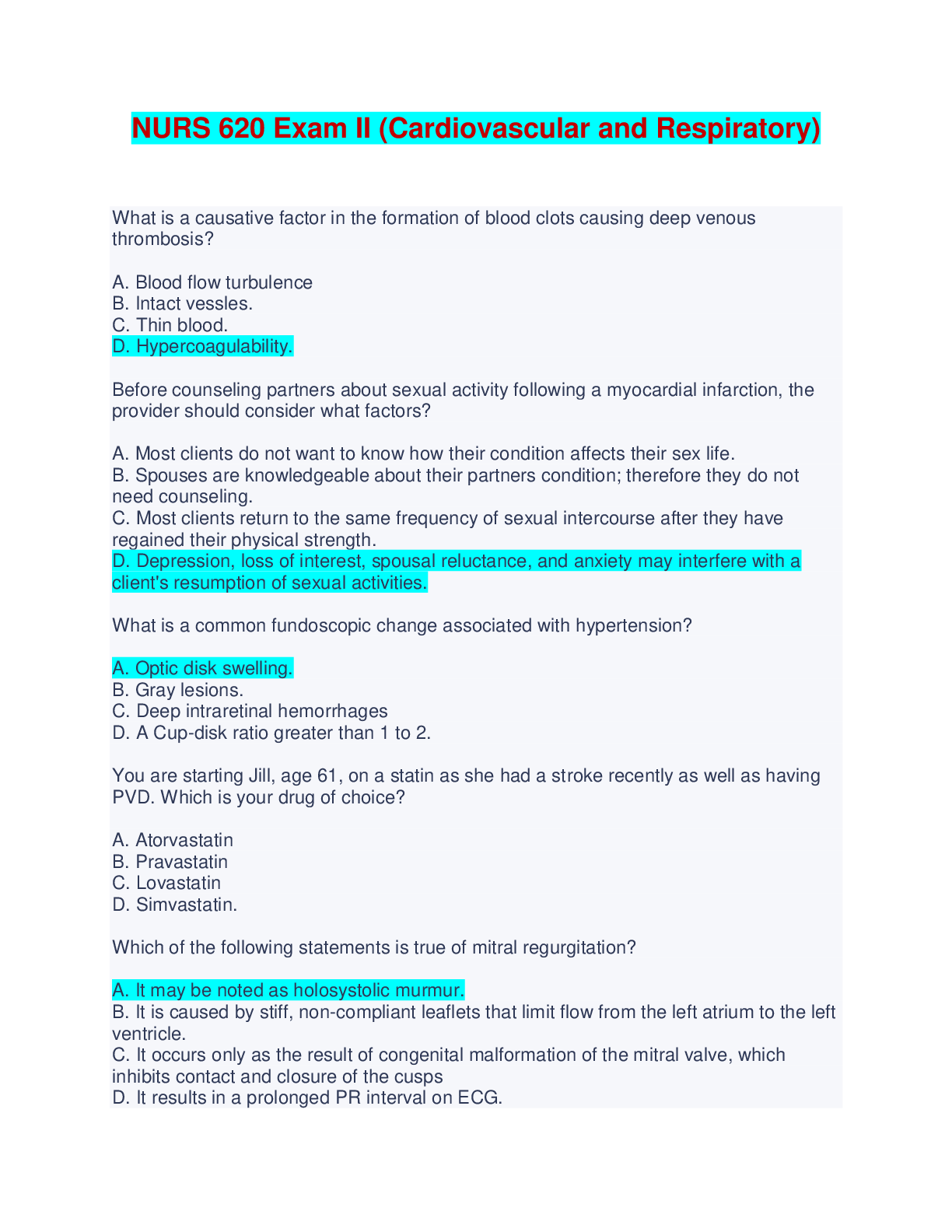
Reviews( 0 )
Document information
Connected school, study & course
About the document
Uploaded On
Dec 08, 2023
Number of pages
56
Written in
Additional information
This document has been written for:
Uploaded
Dec 08, 2023
Downloads
0
Views
19







